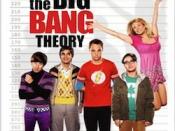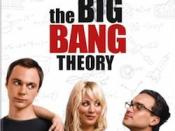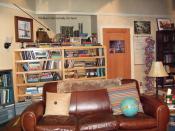The Big Bang Theory
The Big Bang theory tells a present-time idea of creation. Great scientists such as Einstein, Alexander Friedmann, Edwin Hubble, Monsieur L'abbe George Gamow, and a team of Princeton physicists led by Robert Dicke helped conceive and improve the Big Bang theory.
Originally conceived by Einstein in 1915, the Big Bang theory began when he published a paper Called "Cosmological considerations on the general theory of relativity". His paper stated that all objects in the universe move either towards each other or away from each other, which he did not believe.
Because Einstein did not believe that all objects in the universe should move at all, he added the "Cosmological Constant". The "Cosmological Constant" was a loophole in the equations that he made so he could continue to believe that the planets, stars, space stuff etc. doesn't move.
From 1922 to 1924, Alexander Friedmann came up with solutions to Einstein's equations, discarding the "Cosmological Constant".
He found that Einstein made a mistake in using the "Cosmological Constant", and he got rid of it forever.
In 1929, Edwin Hubble discovered that light shifts towards the red end of the
Davenport 2
spectrum when distorted through space. He used this "shift" to tell how far objects in space were moving in relation to where they were before.
In 1927 Monsieur L'abbe came up with the theory that the expanding of the universe was the beginning of time, or, in his words, "a day without a yesterday." He believed the universe came into being in a primordial explosion. Monsieur L'abbe's theory suggested the first universe was a super-heavy neutron that broke apart because of radioactivity. Even though there are flaws in Monsieur L'abbe's theory, he is considered the father of the Big Bang theory.
In the 1940's...



Big Bang Theory
Interesting to think that the "Big Bang" theory was made up out of nothing. Just like they think the big bang came about.
One thing...the big bang didn't create anything. The big bang isn't, for say, the "creator" of life. There had to be something around to create the big bang. That was the only problem I had with your essay. Otherwise...it was ok.
9 out of 9 people found this comment useful.